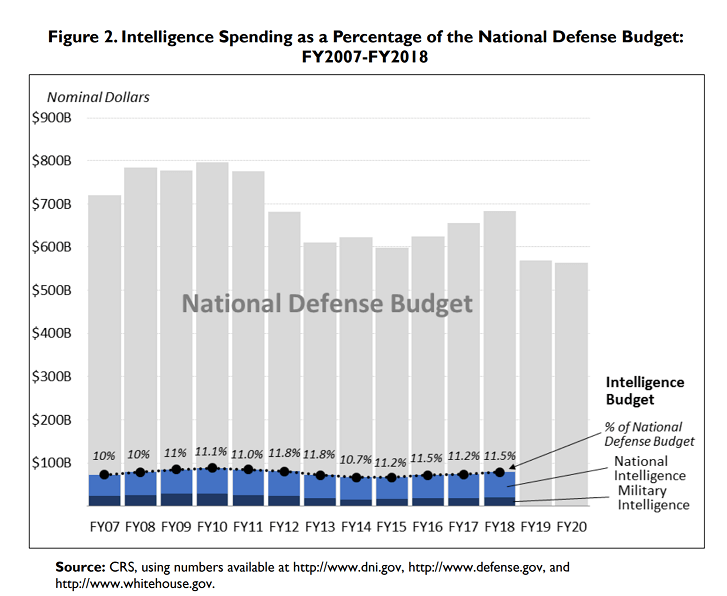The Intelligence Community plays a crucial role in helping keep the nation safe, but its nearly $80 billion budget represents just a small of portion of what the United States spends on national defense and homeland security. At around $1 trillion annually, the U.S. spends more on national security programs and agencies than any other nation in the world.
The intelligence budget is spread out among the entire United States intelligence community, which is comprised of 17 federal agencies assigned to an array of missions relating to national defense, foreign relations, homeland security and law enforcement.
These agencies form just the foundation of what is a sprawling enterprise that incorporates intelligence and non-intelligence components of many other federal agencies, state and local police, as well as fire and emergency response, international government partners, and even private companies and organizations.
Total intelligence spending is also the combination of the National Intelligence Program (NIP), which supports strategic planning and policymaking, and the Military Intelligence Program (MIP), which supports military operational and tactical levels of planning and operations.
The National Intelligence Program includes all programs, projects and activities of the intelligence community as well as any other intelligence community programs designated jointly by the Director of National Intelligence (DNI) and the head of department or agency, or the DNI and the President.
The MIP is devoted to intelligence activity conducted by the military departments and agencies in the Department of Defense that support tactical U.S. military operations. In addition, other departments and agencies may engage in certain activities related to intelligence for their own mission needs.
Currently, there are four defense NIP programs, eight nondefense NIP programs, and 10 MIP programs. Six U.S. intelligence community (IC) components have both MIP and NIP funding sources, while funding is also associated with the 17 components of the IC, which is significant.
For Fiscal Year 2017, the aggregate amount, which included both base and supplemental or appropriated funds for national and military intelligence programs, totaled $73.0 billion – $54.6 billion for the NIP, and $18.4 billion for the MIP.
In comparison to national defense spending, intelligence-related spending has remained relatively constant over the past decade, representing approximately 11 percent of the total defense budget. For FY2018, the aggregate amount of appropriations requested for national and military intelligence programs totaled $78.4 billion, which includes $57.7 billion for the NIP and $20.7 billion for the MIP.
The combined NIP and MIP budgets do not encompass the total of U.S. intelligence-related spending. This is because many departments have intelligence-gathering entities that support a department-specific mission, use department funds, and do not fall within either the NIP or the MIP.
The intelligence budget, which is separate and distinct from the defense budget, dates to reforms initiated in the 1970s to improve oversight and accountability of the IC.
It is worth noting that the intelligence budget is meant to fund “intelligence and intelligence-related activities,” which are defined to include the “collection, analysis, production, dissemination, or use of information that relates to a foreign country, or a government, political group, party, military force, movement, or other association in a foreign country, and that relates to the defense, foreign policy, national security, or related policies of the United States and other activity in support of the collection, analysis, production, dissemination, or use of such information.”
This is meant to counter similar activities directed against the United States, including covert or clandestine activities affecting the relations of the United States with a foreign government, political group, party, military force, movement, or other association.





